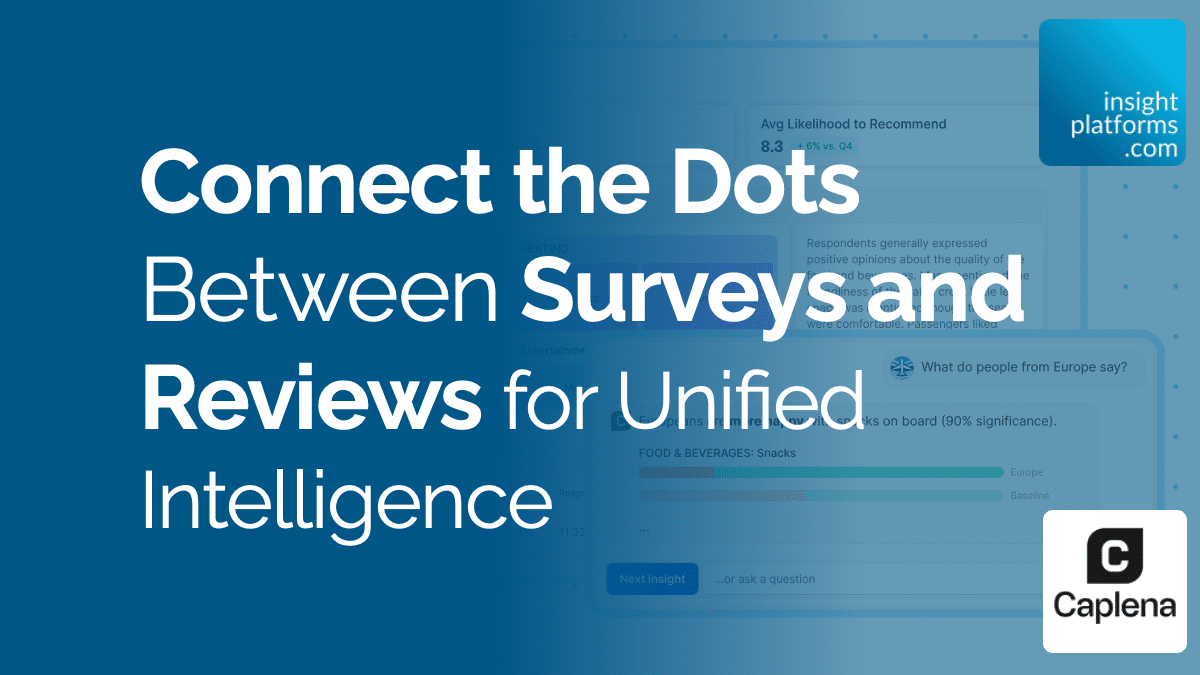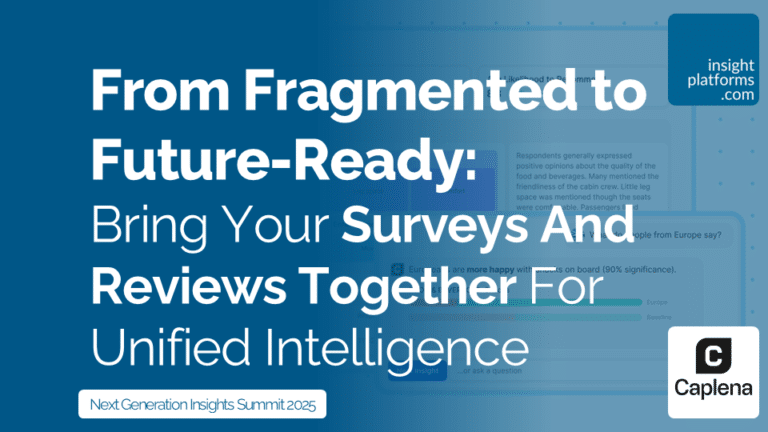
Connect the Dots Between Surveys and Reviews for Unified Intelligence
By Caplena
- article
- AI
- Unified Data Analytics
- Online Surveys
- Survey Research
- Ratings & Reviews
- Feedback Analytics
Brands strive to better understand their customers by gathering information from multiple sources – social media, news articles, surveys, reviews, and more. However, processing, digesting, and sharing these diverse data sets across teams presents significant challenges, particularly when combining different types of feedback data.
This is a challenge that Caplena is helping companies overcome. In a recent presentation at the Next Generation Insights Summit, Pascal de Buren, co-founder of Caplena, demonstrated approaches for analysing and unifying customer feedback from multiple sources.
Watch the replay of the webinar here:
From Fragmented to Future-Ready: Bring your surveys and reviews together for unified intelligence
Challenges in Multi-Source Feedback Analysis
Before exploring the solution, let’s examine the main challenges in multi-source feedback analysis:
- Diverse scale formats: different feedback sources use varying rating formats – from 5-star ratings to NPS scales – making direct comparisons difficult without standardisation.
- Inconsistent naming conventions: customer feedback often contains inconsistent naming conventions for brands, products, and other variables, complicating data comparison and aggregation across sources.
- Variable feedback patterns across sources: different feedback channels show distinct patterns in the types of feedback they generate. For example, online reviews tend to emphasise customer service issues more than surveys do, creating challenges in comparing insights across sources.
Caplena’s Approach
Caplena combines open-ended text with quantitative variables, enabling researchers to evaluate their analysis quality through AI quality scores. It features an interactive interface that allows users to refine AI output according to their specific context and research goals. This allows analysts to quickly explore patterns and generate insights through natural language queries while maintaining access to the underlying statistical validity measures.
The platform enables researchers to conduct driver analysis across combined data sources, identifying the factors with the strongest correlation with satisfaction ratings, regardless of the origin of the feedback. It can also segment this analysis by brand or other variables to identify areas of improvement.
Key technical features include automated data source connection through APIs, variable matching across different data sources, and scale normalisation using configurable formulas. Metadata standardisation is handled through large language models, while interactive reporting and visualisation tools make insights accessible across teams.
The system continuously monitors incoming feedback and suggests new topics to be added to the coding framework, ensuring comprehensive coverage as feedback patterns evolve. While primarily designed for continuous feedback programs, the platform also supports ad-hoc research projects by integrating external data sources, such as online reviews, to enhance survey findings with additional context.
This unified approach eliminates data silos, ensures consistent analysis across sources, and enables real-time insight generation while reducing manual processing. The result is enhanced insight validation and improved accessibility of insights across teams.
Looking Ahead
As organisations continue to gather customer feedback from an increasing number of sources, tools that can unify and analyse these diverse sources become increasingly valuable. Caplena’s solution demonstrates how AI can help organisations leverage all available customer feedback while maintaining analytical rigour, moving toward a holistic view of customer experience.



